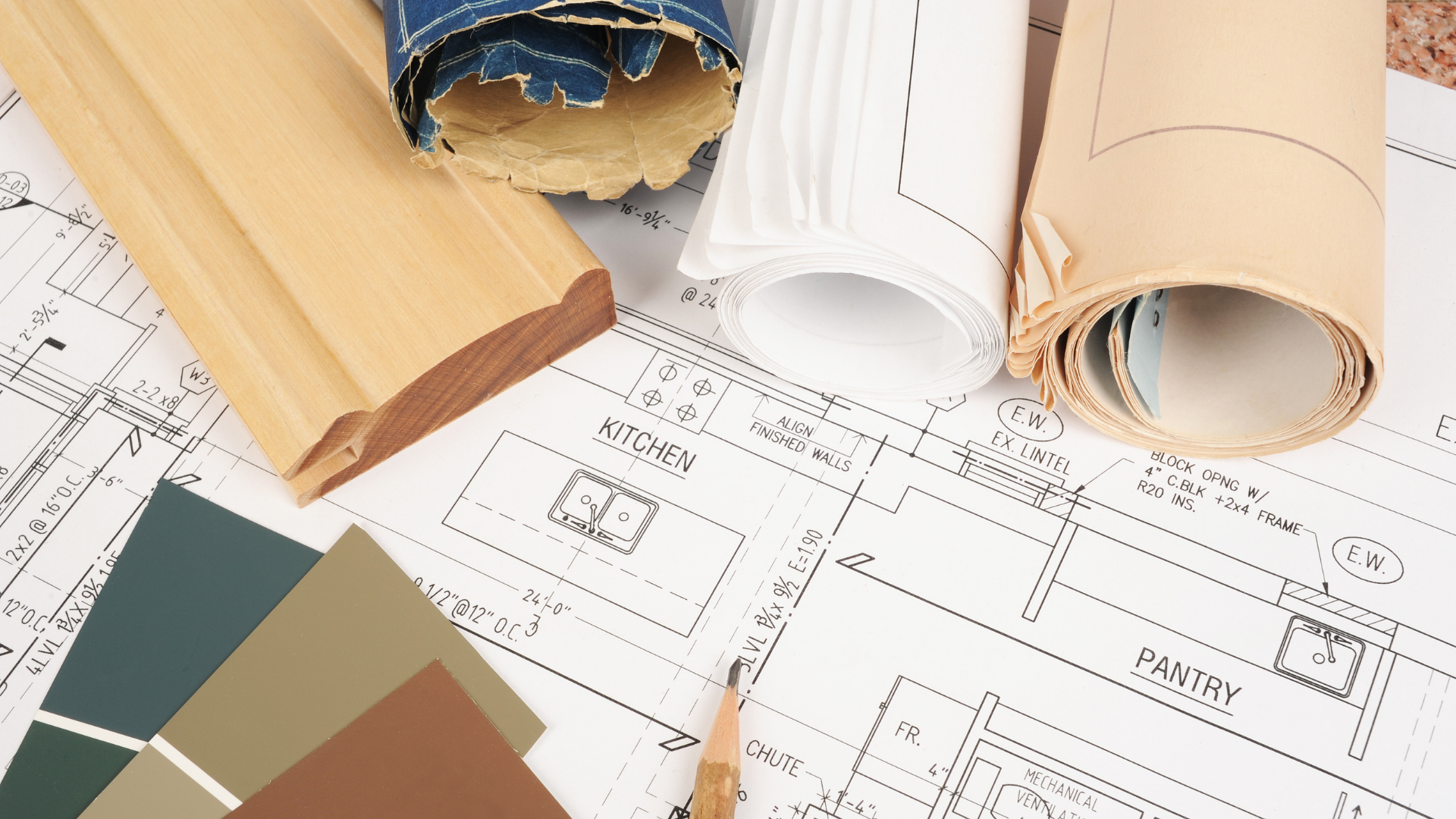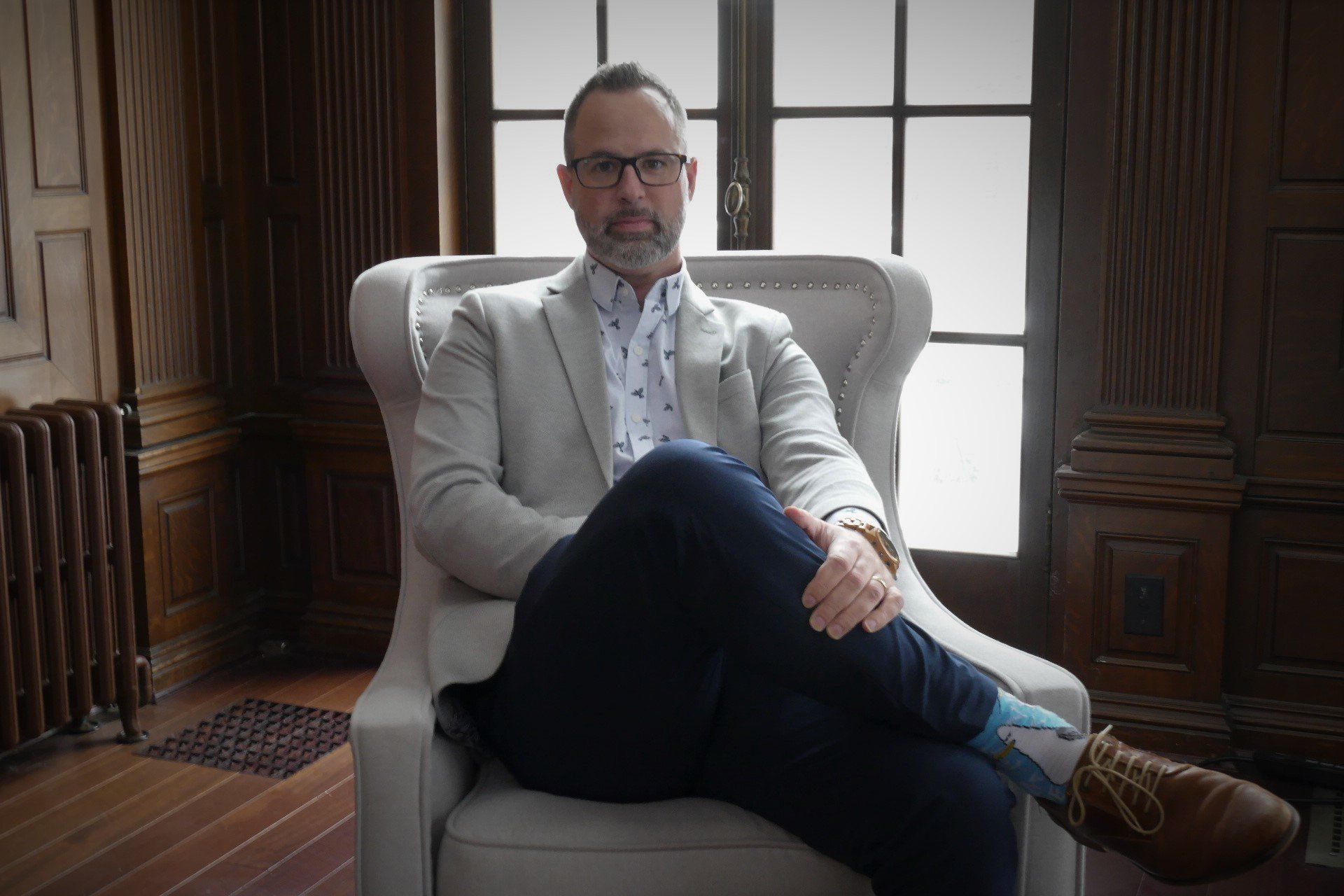Are Interest Rates Going Up and Down at the Same Time? COVID-19
Erik Sepper • April 8, 2020

If you’re paying more attention to the Canadian economy due to COVID-19, and it seems like you’re getting mixed messages; that mortgage interest rates are going both up and down at the same time, you’re not that far off. There are a lot of moving parts, and to find clarity, we need to make sure we’re comparing apples to apples, and oranges to oranges.
Let’s begin by acknowledging that not all interest rates are the same. The term “interest rates” can mean a lot of different things in news story headlines.
The Government “overnight rate” is different from the “qualifying rate”, which is different from the banks “prime rate”, which is different from “variable rates”, which is different from the “discount on a variable rate” which is different from “fixed rates”.
Here’s a list of the different types of mortgage rates, a quick summary of what they are, the direction they’re going, and how they impact you.
Target for the Overnight Rate.
Also known as the policy rate, this is the rate that the Bank of Canada (The Government) controls. When the Bank of Canada changes the Target for the Overnight Rate, this change affects other interest rates in the economy.
Typically there are only eight days in the year for the Bank of Canada to announce if they will change the rate. However, given the recent COVID-19, the Bank of Canada has made special announcements.
The overnight rate was set with a target of 1.75% for a long time before the pandemic.
March 4th 2020, the rate was lowered to 1.25%. March 16th 2020, the rate was lowered to 0.75% in an emergency rate cut. March 27th 2020, the rate was lowered to 0.25% in a second emergency rate cut.
The overnight rate now sits at 0.25% with April 15th 2020, as the next scheduled announcement date.
By cutting interest rates, the government hopes to stimulate economic growth. Lower financing costs encourages borrowing and investing, which is what our government believes will get us through this pandemic.
Qualifying Rate
Also known as the Benchmark Qualifying Rate or the five year qualifying posted rate, this is another rate set by the government. If you’re getting an insured mortgage, the government wants to make sure you will be able to afford your mortgage at the end of your term (in case interest rates go up). So they make you qualify for your mortgage at a higher rate than you will actually be paying.
The government has recently dropped the qualifying rate from 5.19% to 5.04%. This decrease, like the drop in the overnight rate, is meant to help stimulate the economy. The average Canadian will qualify to borrow an additional $10,000 with this drop.
Banks Prime Rate
The banks prime lending rate isn’t the same as the overnight rate; however, the banks prime lending rate is impacted by the overnight rate. Each bank sets its own prime lending rate. When the Bank of Canada moves the overnight rate, typically the prime rate at each bank will follow.
Because of the emergency rate cut on March 27th, banks lowered their prime lending rate to 2.45%. Some banks moved immediately, while some made the change effective April 1st, which means the savings will be seen on May 1st, but they all did lower their prime rates.
The prime lending rate is used by banks to determine rates on floating mortgage products (like the variable rate), lines of credit, home equity lines of credit (HELOC), and some credit cards.
If you currently have a variable rate mortgage or a HELOC, a lower prime rate means that you are now paying less interest on your existing mortgage, this is a good thing.
Variable Rate Mortgage
A variable rate mortgage is a mortgage that fluctuates with the prime lending rate. Typically, the mortgage rate will change with the prime lending rate and includes a “component” or “discount” to the prime rate +/- a specified amount, such as Prime - 0.45%. The lender sets this component to prime.
So, if you have a variable rate mortgage at Prime -0.45%, the rate you’d be paying today (with a prime rate of 2.45%) is 2%.
This is where it gets a little confusing because while the government is trying to stimulate the economy by lowering the overnight rate, banks have followed by lowering their prime rate, but at the same time have increased the component to prime - by the same amount of 0.5% or in some cases even more.
Although there are immediate savings for existing variable rate mortgage holders, anyone looking to get a new variable rate mortgage will do so at a higher rate than a few weeks ago.
Fixed Rate Mortgage
As its name suggests, a fixed rate mortgage is where your mortgage rate stays the same throughout your term. Your rate isn’t tied to the prime lending rate but rather is unmoved by outside factors. With all the uncertainty in the Canadian economy, lenders have actually been increasing rates for new fixed rate mortgages.
So while the government is doing all they can to keep rates low, why are banks increasing fixed rate mortgages?
Well, banks are in the business of making money, and given that over 2 million Canadians have applied for some kind of assistance to get through COVID-19, the fear is that mortgage delinquency will go up considerably as the coronavirus financially impacts people.
Banks are increasing fixed rates to protect themselves against economic uncertainty.
So what does this mean for you? Well, as everyone’s financial situation is different, it’s impossible to give blanket advice that applies to everyone. But here is some general advice.
Existing Variable Rate Holders
You’re doing well. The recent drop in the banks prime rate to 2.45% has lowered the amount of interest you are paying on your mortgage. You have a discount to prime for the remainder of your term that isn’t currently available in the market. Your mortgage rate is one of the lowest in Canadian history.
As the next announcement by the government will be April 15th 2020, there is a chance your rate could go even lower.
If at this time, you’re considering locking your variable rate into a fixed rate, that would significantly increase the amount of interest you are paying. As fixed rates have increased over the last weeks, this isn’t a good option right now.
The reason you went variable in the first place is the reason you should stay variable at this point. With all the economic uncertainty, the prime rate won’t be going up anytime soon.
Existing Fixed Rate Mortgage Holders
Your fixed rate is set lower than the fixed rates currently being offered. If you break your term now, you will incur a higher penalty. So unless you must make a move, it would probably be best just to stay the course.
Hopefully, fixed rates will go down when the economic uncertainty winds down, and rates will be in a good spot when your term comes up for renewal.
Are you looking for a new mortgage?
The most important thing for you going forward is flexibility. Variable rates are still historically low, and although fixed rate mortgages have gone up over the last weeks, there are still lots of great mortgage options available on the market.
The best place to start is to contact me directly so we can go over your financial situation and discuss the best plan for you to move ahead in these uncertain times.
So although it may appear that mortgage interest rates are going both up and down at the same time, understanding what is meant by “interest rates” is crucial. The government is lowering rates to stimulate the economy, while banks are trying to protect themselves against future losses by increasing rates while they can.

How to Use Your Mortgage to Finance Home Renovations Home renovations can be exciting—but they can also be expensive. Whether you're upgrading your kitchen, finishing the basement, or tackling a much-needed repair, the cost of materials and labour adds up quickly. If you don’t have all the cash on hand, don’t worry. There are smart ways to use mortgage financing to fund your renovation plans without derailing your financial stability. Here are three mortgage-related strategies that can help: 1. Refinancing Your Mortgage If you're already a homeowner, one of the most straightforward ways to access funds for renovations is through a mortgage refinance. This involves breaking your current mortgage and replacing it with a new one that includes the amount you need for your renovations. Key benefits: You can access up to 80% of your home’s appraised value , assuming you qualify. It may be possible to lower your interest rate or reduce your monthly payments. Timing tip: If your mortgage is up for renewal soon, refinancing at that time can help you avoid prepayment penalties. Even mid-term refinancing could make financial sense, depending on your existing rate and your renovation goals. 2. Home Equity Line of Credit (HELOC) If you have significant equity in your home, a Home Equity Line of Credit (HELOC) can offer flexible funding for renovations. A HELOC is a revolving credit line secured against your home, typically at a lower interest rate than unsecured borrowing. Why consider a HELOC? You only pay interest on the amount you use. You can access funds as needed, which is ideal for staged or ongoing renovations. You maintain the terms of your existing mortgage if you don’t want to refinance. Unlike a traditional loan, a HELOC allows you to borrow, repay, and borrow again—similar to how a credit card works, but with much lower rates. 3. Purchase Plus Improvements Mortgage If you're in the market for a new home and find a property that needs some work, a "Purchase Plus Improvements" mortgage could be a great option. This allows you to include renovation costs in your initial mortgage. How it works: The renovation funds are advanced based on a quote and are held in trust until the work is complete. The renovations must add value to the property and meet lender requirements. This type of mortgage lets you start with a home that might be more affordable upfront and customize it to your taste—all while building equity from day one. Final Thoughts Your home is likely your biggest investment, and upgrading it wisely can enhance both your comfort and its value. Mortgage financing can be a powerful tool to fund renovations without tapping into high-interest debt. The right solution depends on your unique financial situation, goals, and timing. Let’s chat about your options, run the numbers, and create a plan that works for you. 📞 Ready to renovate? Connect anytime to get started!

Going Through a Separation? Here’s What You Need to Know About Your Mortgage Separation or divorce can be one of life’s most stressful transitions—and when real estate is involved, the financial side of things can get complicated fast. If you and your partner own a home together, figuring out what happens next with your mortgage is a critical step in moving forward. Here’s what you need to know: You’re Still Responsible for Mortgage Payments Even if your relationship changes, your obligation to your mortgage lender doesn’t. If your name is on the mortgage, you’re fully responsible for making sure payments continue. Missed payments can lead to penalties, damage your credit, or even put your home at risk of foreclosure. If you relied on your partner to handle payments during the relationship, now is the time to take a proactive role. Contact your lender directly to confirm everything is on track. Breaking or Changing Your Mortgage Comes With Costs Dividing your finances might mean refinancing, removing someone from the title, or selling the home. All of these options come with potential legal fees, appraisal costs, and mortgage penalties—especially if you’re mid-term with a fixed-rate mortgage. Before making any decisions, speak with your lender to get a clear picture of the potential costs. This info can be helpful when finalizing your separation agreement. Legal Status Affects Financing If you're applying for a new mortgage after a separation, lenders will want to see official documentation—like a signed separation agreement or divorce decree. These documents help the lender assess any ongoing financial obligations like child or spousal support, which may impact your ability to qualify. No paperwork yet? Expect delays and added scrutiny in the mortgage process until everything is finalized. Qualifying on One Income Can Be Tougher Many couples qualify for mortgages based on combined income. After a separation, your borrowing power may decrease if you're now applying solo. This can affect your ability to buy a new home or stay in the one you currently own. A mortgage professional can help you reassess your financial picture and identify options that make sense for your situation—whether that means buying on your own, co-signing with a family member, or exploring government programs. Buying Out Your Partner? You May Have Extra Flexibility In cases where one person wants to stay in the home, lenders may offer special flexibility. Unlike traditional refinancing, which typically caps borrowing at 80% of the home’s value, a “spousal buyout” may allow you to access up to 95%—making it easier to compensate your former partner and retain the home. This option is especially useful for families looking to minimize disruption for children or maintain community ties. You Don’t Have to Figure It Out Alone Separation is never simple—but with the right support, you can move forward with clarity and confidence. Whether you’re keeping the home, selling, or starting fresh, working with a mortgage professional can help you understand your options and create a strategy that aligns with your new goals. Let’s talk through your situation and explore the best path forward. I’m here to help.

Ready to Buy Your First Home? Here’s How to Know for Sure Buying your first home is exciting—but it’s also a major financial decision. So how can you tell if you’re truly ready to take that leap into homeownership? Whether you’re confident or still unsure, these four signs are solid indicators that you’re on the right path: 1. You’ve Got Your Down Payment and Closing Costs in Place To purchase a home in Canada, you’ll need at least 5% of the purchase price as a down payment. In addition, plan for around 1.5% to 2% of the home’s value to cover closing costs like legal fees, insurance, and adjustments. If you’ve managed to save this on your own, that’s a great sign of financial discipline. If you're receiving help from a family member through a gifted down payment , that works too—as long as the paperwork is in order. Either way, having these funds ready shows you’re prepared for the upfront costs of homeownership. 2. Your Credit Profile Tells a Good Story Lenders want to know how you manage debt. Before they approve you for a mortgage, they’ll review your credit history. What they typically like to see: At least two active credit accounts (trade lines) , like a credit card or loan Each with a minimum limit of $2,000 Open and active for at least 2 years Even if your credit isn’t perfect, don’t panic. There may still be options, such as using a co-signer or working on a credit improvement plan with a mortgage expert. 3. Your Income Can Support Homeownership—Comfortably A steady income is essential, but not all income is treated equally. If you’re full-time and past probation , you’re in a strong position. If you’re self-employed, on contract, or rely on variable income like tips or commissions, you’ll generally need a two-year history to qualify. A general rule: housing costs (mortgage, taxes, utilities) should stay under 35% of your gross monthly income . That leaves plenty of room for other living expenses, savings, and—yes—some fun too. 4. You’ve Talked to a Mortgage Professional Let’s be real—there’s a lot of info out there about buying a home. Google searches and TikToks can only take you so far. If you're serious about buying, speaking with a mortgage professional is the most effective next step. Why? Because you'll: Get pre-approved (and know what price range you're working with) Understand your loan options and the qualification process Build a game plan that suits your timeline and financial goals The Bottom Line: Being “ready” to buy a home isn’t just about how much you want it—it’s about being financially prepared, credit-ready, and backed by expert advice. If you’re thinking about homeownership, let’s chat. I’d love to help you understand your options, crunch the numbers, and build a plan that gets you confidently across the finish line—keys in hand.

